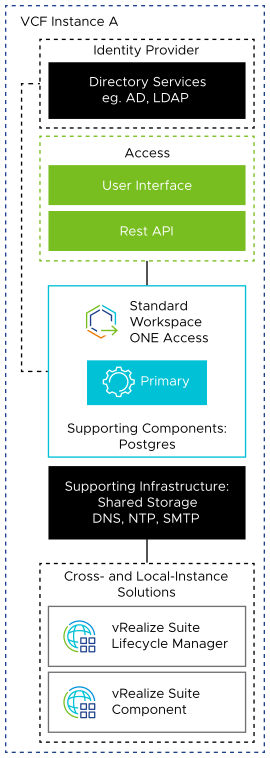To provide identity and access management services to supported SDDC components, such as vRealize Suite components, this design uses a Workspace ONE Access instance that is deployed on an NSX network segment.

| Single VMware Cloud Foundation Instance |
Single VMware Cloud Foundation Instance with Multiple Availability Zones |
Multiple VMware Cloud Foundation Instances |
|---|---|---|
|
|
|

Single VMware Cloud Foundation Instance |
Single VMware Cloud Foundation Instance with Multiple Availability Zones |
Multiple VMware Cloud Foundation Instances |
|---|---|---|
|
|
|
Supporting Infrastructure
In this design, Workspace ONE Access integrates with the following supporting infrastructure:
NTP for time synchronization
DNS for name resolution
Active Directory
Workspace ONE Access does not replace an organization's enterprise directory. Workspace ONE Access integrates with an enterprise directory as an identity provider for authentication to support solution authorization.